LED screens for advertising are advanced digital panels designed to present high-resolution visuals, videos, and messages in both indoor and outdoor environments. They have become the core medium for modern advertising because they combine bright imagery with flexible installation options, delivering brand messages more effectively than traditional posters or LCD signage. Choosing the right LED screen depends on several factors including pixel pitch, brightness, installation structure, cost, supplier credibility, and long-term application goals. Businesses can select from indoor, outdoor, rental, transparent, and flexible LED screens to achieve targeted visibility and maximize their advertising investment.
An LED screen for advertising uses light-emitting diodes (LEDs) to generate visual content with high brightness, vivid color reproduction, and energy efficiency. Unlike LCDs, LED screens scale easily to massive sizes without losing brightness. Indoor advertising LED screens are designed with fine pixel pitches such as P0.6 to P2.5 for close viewing, while outdoor advertising LED screens are typically P4 to P10 with rugged cabinets and DIP or SMD lamps for weatherproofing.
Retail advertising: in malls and shop windows with indoor LED display panels
Transportation hubs: airports, train stations, metro platforms use LED video wall for both information and advertising
Large-scale outdoor billboards: mounted on rooftops, highways, and stadiums with outdoor LED display solutions
Event venues and concerts: using rental LED screens for stage backdrops and immersive branding
The versatility of LED advertising displays means they are equally valuable for local retail campaigns and global brand activations.
When selecting an LED screen supplier or manufacturer, several technical and business criteria must be considered.
Pixel pitch refers to the distance between two pixels, expressed as “P” plus a number. A smaller number means higher resolution. For example, P1.25 and P2.5 indoor LED displays are suitable for close-up viewing in retail or conference centers. For outdoor campaigns viewed from a distance, P6, P8, or P10 LED screens provide cost-effective solutions.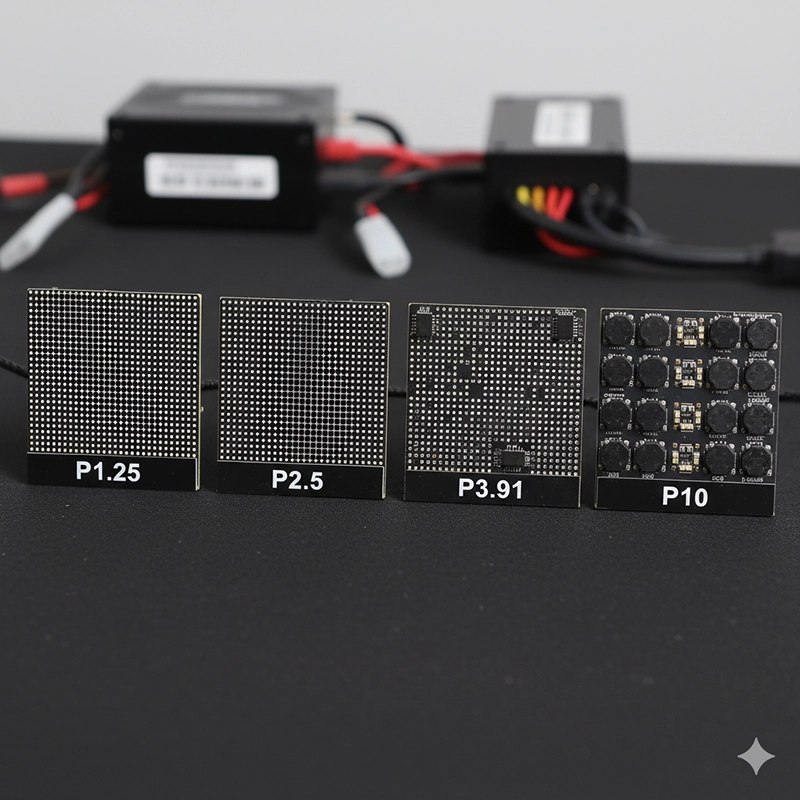
| Pixel Pitch | Typical Usage | Installation Type | Recommended Environment |
|---|---|---|---|
| P0.6 – P1.2 | Ultra-fine pitch, high resolution | Wall-mounted, indoor fixed | Control rooms, luxury retail, broadcast studios |
| P1.5 – P2.5 | Standard indoor advertising | Hanging, wall-mounted | Shopping malls, airports, conference centers |
| P3 – P4 | Semi-outdoor & indoor rental | Stacking, hanging | Events, exhibitions, stage backgrounds |
| P5 – P10 | Outdoor large screens | Column-mounted, rooftop | Highways, stadiums, urban billboards |
Indoor LED screens: 600–1,200 nits are typically sufficient for retail and exhibitions
Outdoor LED screens: 4,000–10,000 nits ensure visibility in direct sunlight
Side-emitting vs. front-emitting LED configurations influence viewing angle and uniformity
Wall-mounted indoor LED display in retail environments
Column-mounted or rooftop outdoor LED screens for billboards
Hanging rental LED screens for events and concerts
Stacking systems for flexible stage setups
Creative formats such as curved LED displays, transparent LED screens, corner or 3D installations for brand storytelling
Indoor LED screens are manufactured with SMD, COB, or MIP encapsulation. Fine pixel pitches like P0.6, P1.25, or P2.5 deliver crystal-clear advertising content. A supplier may recommend COB technology for durability and seamless displays in high-end applications. Indoor LED display manufacturers often provide modular designs that allow installation on walls, pillars, or as LED video walls inside shopping centers.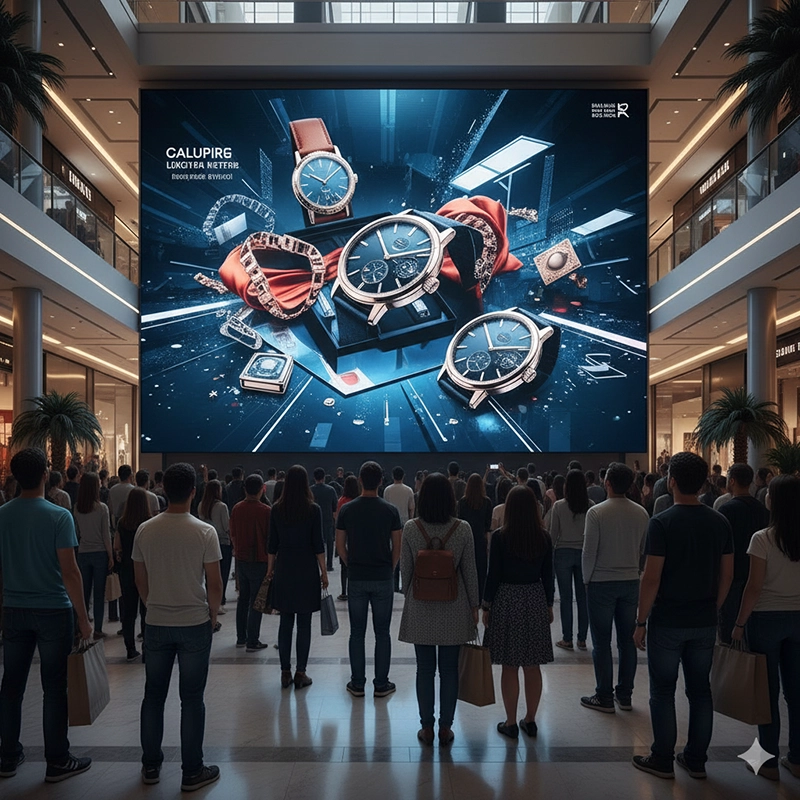
Outdoor LED screens are designed for high-impact advertising on a large scale. Outdoor LED display manufacturers use both SMD and DIP lamp types to balance color quality and robustness. Outdoor LED screens with P6 or P10 modules are cost-effective for long-distance visibility. Outdoor LED screen suppliers must ensure cabinets are IP65 waterproof, resistant to dust, wind, and UV exposure.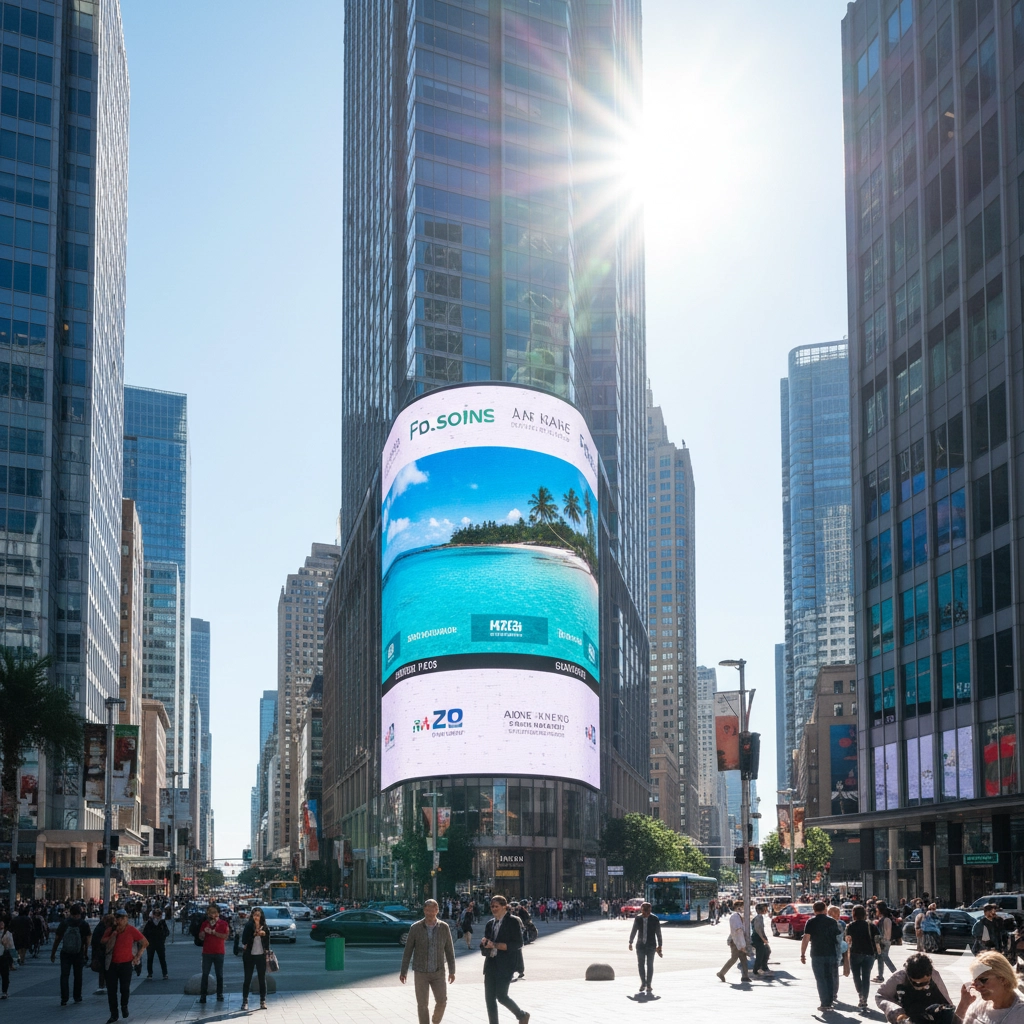
Transparent LED screens are increasingly used for retail shop windows and corporate lobbies. They maintain transparency while displaying bright visuals, combining advertising with architectural aesthetics. Creative LED screens include holographic displays, glass LED screens, grille panels, and 3D interactive LED floors. A flexible LED display can bend into curved forms, while transparent LED panels allow creative see-through advertising.
Rental LED screen are preferred for exhibitions, concerts, and corporate events. Rental LED display manufacturers design cabinets with quick-lock systems for fast assembly. Pixel pitches such as P2.5 or P3.91 are common in rental LED screen, balancing portability and resolution. Rental LED displays often feature high refresh rates to ensure smooth performance under professional cameras.
Church LED display are increasingly adopted by houses of worship for sermons, live music, and community gatherings. They provide clear, large-scale visuals that enhance the worship experience, displaying song lyrics, live streams, or recorded content. Unlike projectors, church LED screens maintain brightness in well-lit spaces and offer long-term reliability for religious institutions.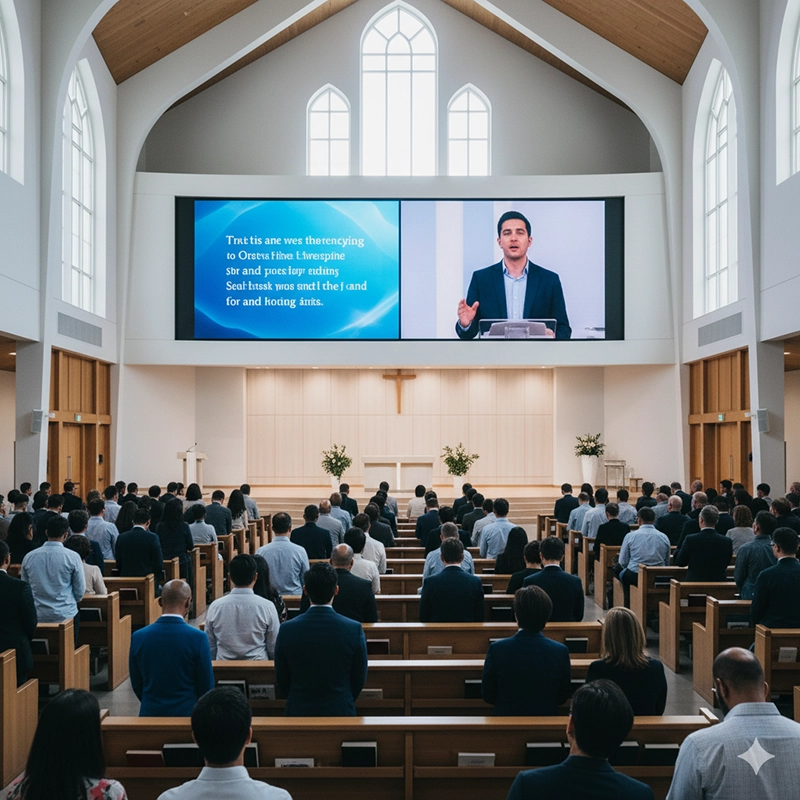
Stadium Display Solutions combine LED video walls, perimeter LED boards, and scoreboard systems to create an immersive fan experience. These large outdoor LED displays deliver sponsor branding, instant replays, and live score updates visible to tens of thousands of spectators. A reliable LED screen manufacturer ensures stadium screens are weatherproof, high-brightness, and capable of 24/7 operation.
Stage LED screens are vital in concerts, exhibitions, and corporate events. They form dynamic backdrops for performances, synchronize with lighting effects, and display live feeds. Rental LED screens for stage applications often use pixel pitches like P2.9 or P3.91, balancing high-quality visuals with portability. Stage LED screen suppliers design modular cabinets for quick setup and dismantling, critical for touring productions.
The cost of an LED advertising screen depends on multiple factors: pixel pitch, brightness, size, encapsulation technology, and installation type.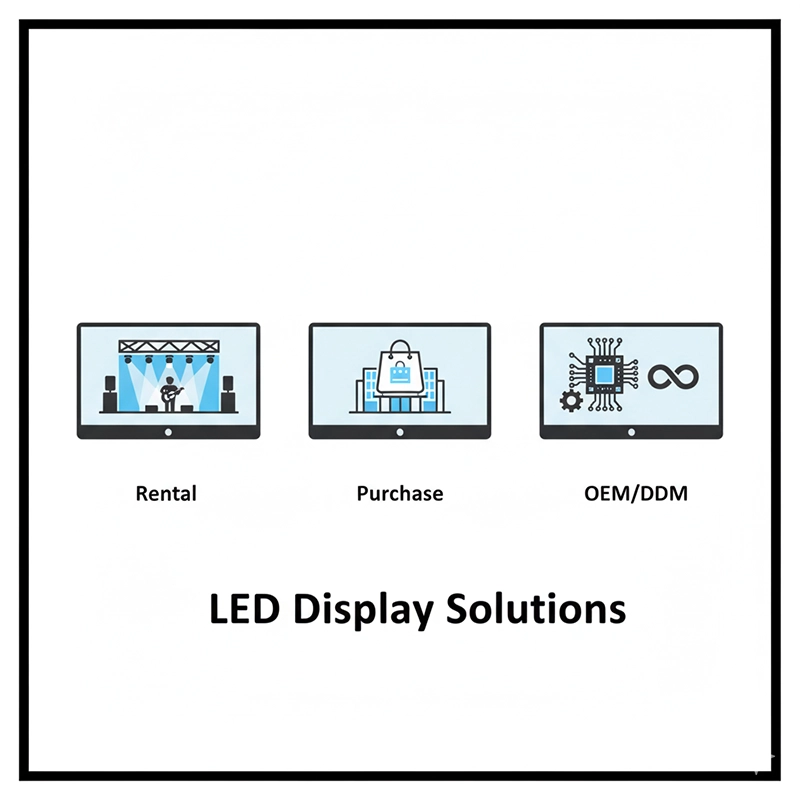
| Option | Upfront Cost | Long-term Value | Flexibility | Best For |
|---|---|---|---|---|
| Rental LED Screen | Low | Higher if used frequently | Very flexible, short-term | Events, concerts, temporary ads |
| Purchase LED Screen | Medium to High | Cost-effective over years | Fixed, long-term use | Shopping malls, outdoor billboards |
| OEM/ODM Factory Customization | Medium | High ROI through tailored specs | Custom branding and sizes | Distributors, integrators, agencies |
Rental LED display: Low initial cost, but frequent use leads to high cumulative expense.
Purchase LED screen: Higher upfront cost, but cost-efficient for permanent advertising.
OEM/ODM solutions from an LED screen factory: Ideal for distributors who need custom specifications and private labeling.
Factory vs distributor: A factory can offer lower cost and customization, while distributors provide quicker local delivery.
OEM/ODM solutions: Essential for resellers and system integrators who need branding flexibility.
Certifications: CE, RoHS, EMC, and ISO certifications are required for compliance in global markets.
Case studies: Successful installations of indoor LED displays, outdoor LED screens, rental LED displays, and transparent LED screens.
After-sales support: Technical training, spare parts availability, and long-term warranty.
China remains the global hub for LED display manufacturing, with many factories offering competitive P2.5, P3.91, and P10 modules. Leading LED display manufacturers are pushing forward with COB and flexible LED technology to address demand for immersive advertising.
Flexible LED displays: Allow bending and curved installations in creative advertising campaigns.
Transparent LED screens: Enable see-through advertising in shop windows, airports, and museums.
Virtual production LED walls: Originally developed for film studios, now adapted for experiential marketing.
Volumetric displays: 3D advertising experiences for maximum audience engagement.
Industry outlook: According to Statista and LEDinside, global LED display revenue will grow steadily with over 8% CAGR through 2030. Demand for transparent LED screens and rental LED displays is expected to rise fastest.
LED screens for advertising are now essential for businesses seeking to capture audience attention in a digital-first world. Whether through indoor LED displays for close-view branding, outdoor LED screens for large-scale visibility, rental LED displays for events, church LED displays for worship, stadium display solution for sports, or stage LED screens for entertainment, each option serves a unique market need. By carefully considering pixel pitch, brightness, installation method, and the reputation of the LED screen manufacturer or supplier, advertisers can secure the best return on investment. Future growth will be driven by flexible and transparent LED display innovations, supported by global factories offering OEM and ODM solutions tailored to diverse commercial applications.
Hot Recommendations
Hot Products
Get a Free Quote Instantly!
Talk to Our Sales Team Now.
If you are interested in our products, please contact us promptly
Reach out to our sales team to explore customized solutions that perfectly meet your business needs and address any questions you may have.
Email Address:info@reissopto.comFactory Address:Building 6, Huike Flat Panel Display Industrial Park, No. 1, Gongye 2nd Road, Shiyan Shilong Community, Bao'an District, Shenzhen city , China
whatsapp:+8615217757270